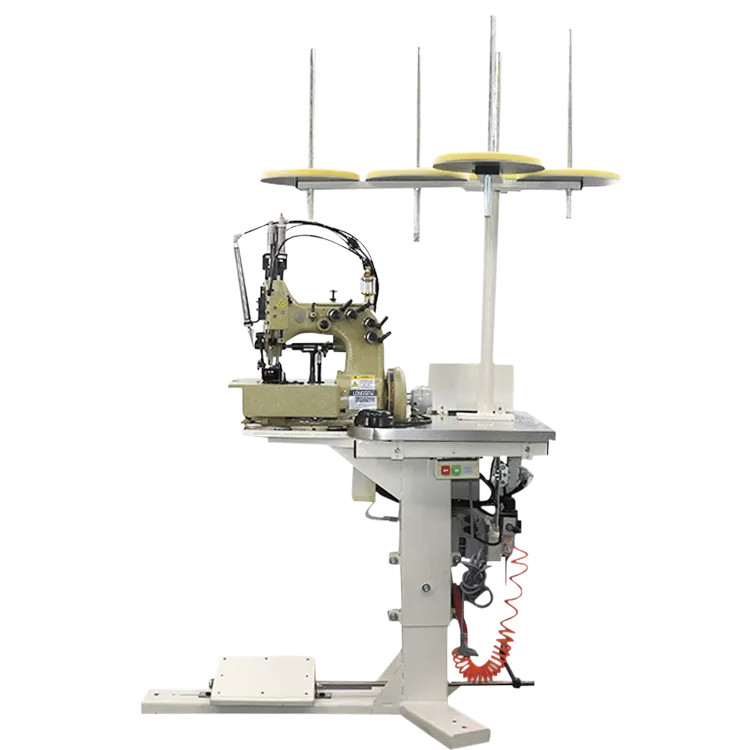fibc safety sewing
Safety in FIBC Sewing Ensuring Quality and Reliability
Flexible Intermediate Bulk Containers (FIBCs), commonly known as bulk bags or big bags, have become essential in various industries for the transportation and storage of bulk materials, from agricultural products to chemical powders. As their usage continues to rise, the importance of quality and safety in their manufacturing process cannot be overstated. One critical aspect that significantly contributes to the overall reliability of FIBCs is the sewing process.
Understanding FIBC Construction
FIBCs are typically made from woven polypropylene fabric, which provides strength and flexibility. The sewing of these bags is crucial since it determines the structural integrity of the container. Sewn seams must be strong enough to withstand the stresses of handling, filling, and transporting heavy loads. Proper sewing techniques, combined with the right materials and equipment, ensure that FIBCs can safely carry their intended loads without tearing or leaking.
Safety Standards and Guidelines
To guarantee safety in FIBC sewing, manufacturers must adhere to strict safety standards and guidelines. Organizations such as the International Organization for Standardization (ISO) and other industry-specific bodies have developed protocols that help ensure the reliability and safety of FIBCs. For instance, ISO 21898 establishes safety requirements specifically for FIBCs, covering everything from design and testing to labeling and use.
When it comes to sewing, adhering to these standards involves using appropriate thread types, ensuring proper seam types, and maintaining stringent quality control throughout the production process. For example, using high-strength, UV-resistant threads can significantly enhance the durability of the seams, especially when the bags will be exposed to outdoor conditions.
Sewing Techniques and Their Importance
fibc safety sewing

The sewing techniques employed in FIBC manufacturing play a vital role in ensuring safety. Common seam types used include lock stitch and chain stitch, each offering varying levels of strength and durability. Lock stitches are generally preferred for their robustness, but the choice may depend on the specific application of the FIBC.
Moreover, the sewing machine settings must be optimized for the material being used. Proper tension, stitch length, and needle size are crucial factors that influence the strength of the seams. Inadequate tension can lead to loose stitches, while excessive tension might cause the fabric to pucker or tear. Regular maintenance and calibration of sewing machines are also essential to avoid defects that could compromise bag integrity.
Quality Control Measures
Quality control is paramount in the FIBC sewing process to ensure every bag meets safety standards. This includes routine inspections of the sewing process, end-of-line testing, and batch sampling. Each FIBC should be thoroughly checked for seam strength, load capacity, and overall construction quality. Tests such as the “burst test” and “drop test” can provide critical data on the bag’s performance under different conditions.
Training and certification of sewing personnel are also significant factors that contribute to safety. Workers should be well-versed in sewing techniques and made aware of the importance of meeting safety standards. Regular training sessions can help maintain high standards of workmanship and awareness regarding the latest safety protocols and advancements in materials and technologies.
Conclusion
Safety in FIBC sewing is a multi-faceted endeavor that encompasses understanding materials, adhering to established standards, employing proper techniques, and implementing rigorous quality control measures. As the demand for FIBCs grows across industries, the emphasis on ensuring the reliability and safety of these containers becomes ever more critical. By prioritizing safety in the sewing process, manufacturers not only protect their own reputation but also safeguard the interests of their customers, ensuring that the materials simply do not just make it from point A to point B, but do so securely and reliably.
-
Boost Production Efficiency with a Pattern Sewing MachineNewsAug.29,2025
-
Industrial Excellence with the Best Heavy Duty Sewing MachineNewsAug.29,2025
-
Precision and Power with the Best Pattern Sewing MachineNewsAug.29,2025
-
Reliable Bulk Packaging Starts With the Right FIBC Sewing MachineNewsAug.29,2025
-
Advanced Packaging Solutions: Elevate Productivity with Jumbo Bag Sewing Machine and Industrial Stitching EquipmentNewsAug.29,2025
-
High-Performance Solutions for Bulk Packaging: FIBC Sewing Machine and MoreNewsAug.29,2025
-
Maximize Efficiency with an Industrial Cylinder Arm Sewing MachineNewsAug.28,2025


























